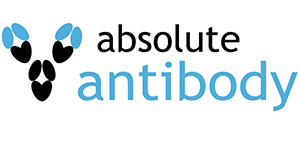Anti-Alpha-synuclein (VH14 (NAC14))
Anti-Alpha-synuclein [VH14 (NAC14)], Recombinant, VHH, Camelid
Artikelnummer
ABAAb04611-34.11-BT
Verpackungseinheit
500 μg
Hersteller
Absolute Antibody
Verfügbarkeit:
wird geladen...
Preis wird geladen...
CloneID: VH14 (NAC14)
Heavy Chain modification: His-tagged
Antigen Long Description: The original antibody was isolated from a naïve repertoire of human scFv antibodies using yeast surface display to select binders against NAC peptide of human alpha-synuclein.
Buffer Composition: PBS only.
Uniprot Accession No.: P37840
Specificity Statement: This antibody binds the hydrophobic non-amyloid component (NAC) of α-synuclein between amino acids 53-87. More specifically, this antibody showed high binding to linear epitope comprising aa 61-78 of alpha-syn. Alpha-synuclein is a small 140 amino acid presynaptic neuronal protein, a major component of Lewy bodies and a member of the synuclein family. Misfolding, abnormal accumulation, and secretion of α-Synuclein (α-Syn) are closely associated with synucleinopathies, including Parkinson’s disease (PD). α-syn is abundant in the brain, and smaller amounts are found in the heart, muscles, and other tissues. In the brain, α-syn is found mainly at the tips of neurons in the specialized structures known as presynaptic terminals and has been shown to comprise up to ∼1% of total proteins in the neuronal cytosol. Recent evidence suggests that α-synuclein (α-syn) can contribute to the pathogenesis of amyotrophic lateral sclerosis (ALS).
Application Notes (Clone): The fusion of a proteasome-targeting PEST motif to this intrabody enhanced the solubility of the nanobody in cytoplasm and significantly enhanced degradation of the target protein, α-syn-GFP (PMID: 22929188). The in vivo therapeutic potential of gene therapy for delivery of proteasome-directed nanobodies selectively targeting α-syn was evaluated in a synuclein overexpression-based PD model. Post-mortem assessments of the substantia nigra (SN) of Sprague–Dawley rats after intracellular delivery of VH14-PEST showed that it markedly reduced the level of phosphorylated Serine-129 α-syn labeling relative to saline-treated animals (PMID: 30155513). A bifunctional antibody generated by fusing VH14 to a proteosome-targeting signal was able to counteract heterologous proteostatic effects of mutant α-Syn on mutant huntingtin Exon1 and protect against α-Syn toxicity using propidium iodide or Annexin V readouts (PMID: 27824888).
Heavy Chain modification: His-tagged
Antigen Long Description: The original antibody was isolated from a naïve repertoire of human scFv antibodies using yeast surface display to select binders against NAC peptide of human alpha-synuclein.
Buffer Composition: PBS only.
Uniprot Accession No.: P37840
Specificity Statement: This antibody binds the hydrophobic non-amyloid component (NAC) of α-synuclein between amino acids 53-87. More specifically, this antibody showed high binding to linear epitope comprising aa 61-78 of alpha-syn. Alpha-synuclein is a small 140 amino acid presynaptic neuronal protein, a major component of Lewy bodies and a member of the synuclein family. Misfolding, abnormal accumulation, and secretion of α-Synuclein (α-Syn) are closely associated with synucleinopathies, including Parkinson’s disease (PD). α-syn is abundant in the brain, and smaller amounts are found in the heart, muscles, and other tissues. In the brain, α-syn is found mainly at the tips of neurons in the specialized structures known as presynaptic terminals and has been shown to comprise up to ∼1% of total proteins in the neuronal cytosol. Recent evidence suggests that α-synuclein (α-syn) can contribute to the pathogenesis of amyotrophic lateral sclerosis (ALS).
Application Notes (Clone): The fusion of a proteasome-targeting PEST motif to this intrabody enhanced the solubility of the nanobody in cytoplasm and significantly enhanced degradation of the target protein, α-syn-GFP (PMID: 22929188). The in vivo therapeutic potential of gene therapy for delivery of proteasome-directed nanobodies selectively targeting α-syn was evaluated in a synuclein overexpression-based PD model. Post-mortem assessments of the substantia nigra (SN) of Sprague–Dawley rats after intracellular delivery of VH14-PEST showed that it markedly reduced the level of phosphorylated Serine-129 α-syn labeling relative to saline-treated animals (PMID: 30155513). A bifunctional antibody generated by fusing VH14 to a proteosome-targeting signal was able to counteract heterologous proteostatic effects of mutant α-Syn on mutant huntingtin Exon1 and protect against α-Syn toxicity using propidium iodide or Annexin V readouts (PMID: 27824888).
| Artikelnummer | ABAAb04611-34.11-BT |
|---|---|
| Hersteller | Absolute Antibody |
| Hersteller Artikelnummer | Ab04611-34.11-BT |
| Verpackungseinheit | 500 μg |
| Mengeneinheit | STK |
| Reaktivität | Human |
| Klonalität | Recombinant |
| Methode | Functional Assay |
| Isotyp | VHH |
| Wirt | Camelid |
| Produktinformation (PDF) |
|
| MSDS (PDF) | Download |

 English
English







